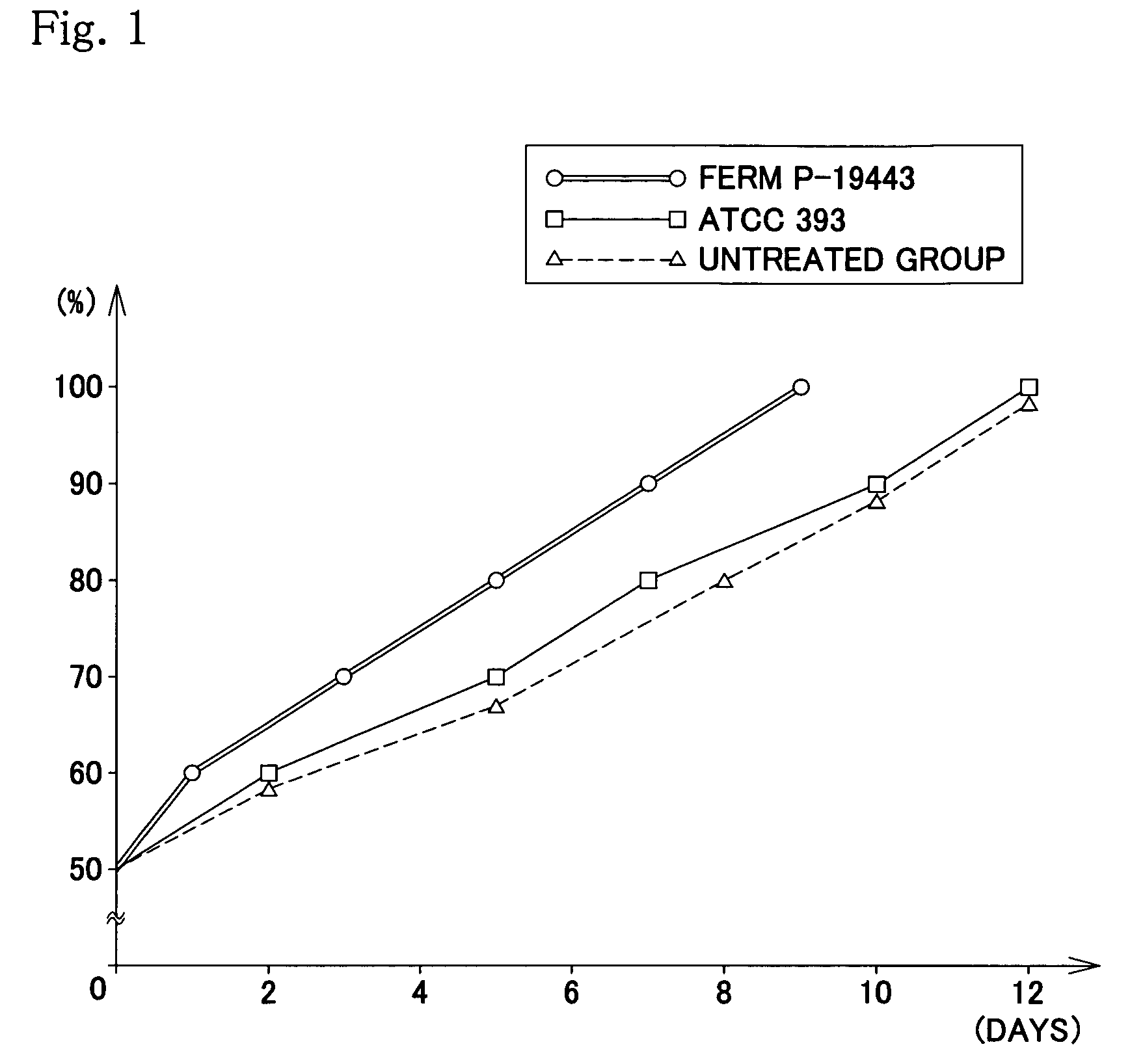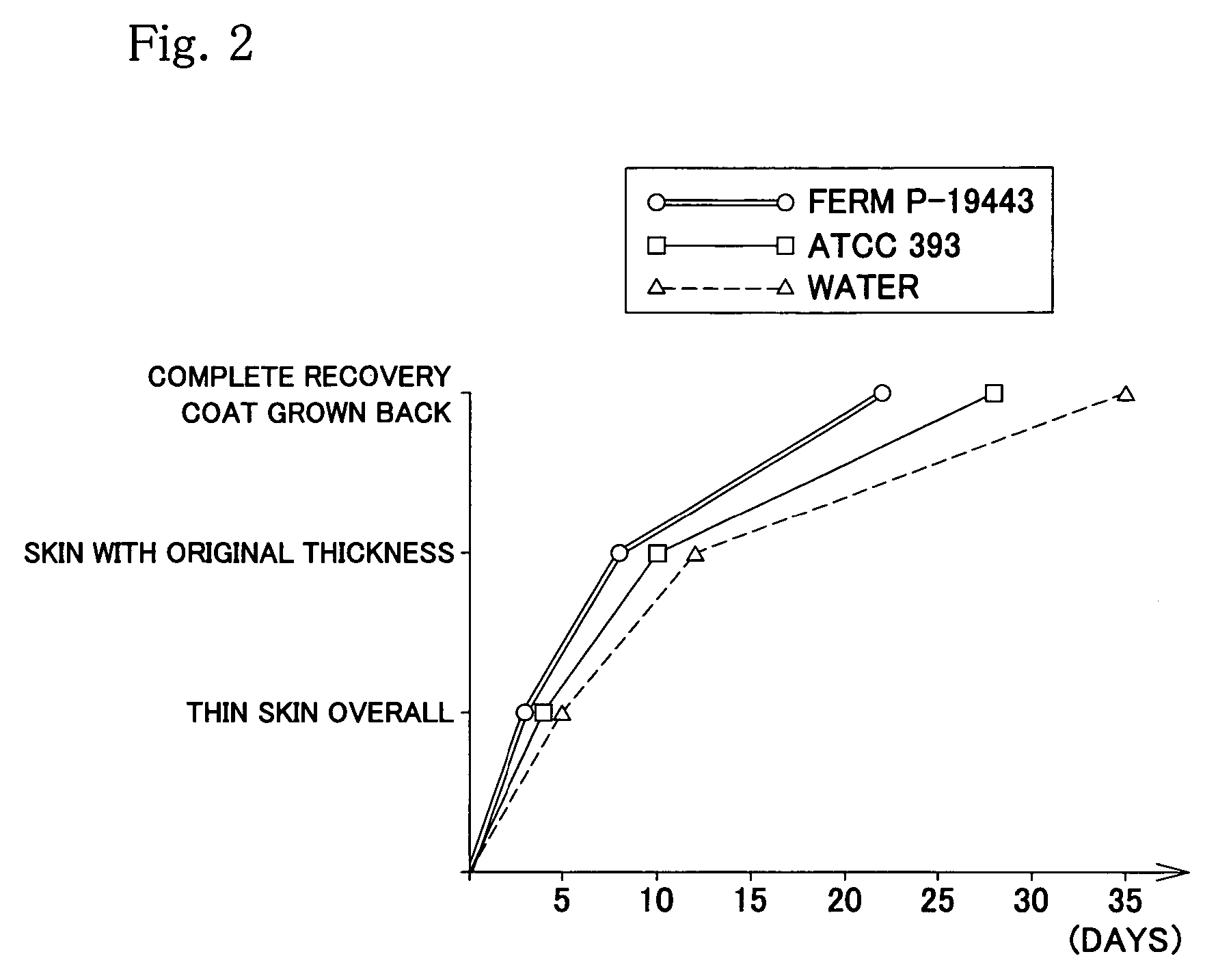Method for treating periodontal disease with a bacteriocidal disinfectant
a disinfectant and bacteriocidal technology, applied in the field of periodontal disease treatment, can solve the problems of red and swelling, loss of elasticity, and loss of teeth, and achieve the effect of low toxicity and high bactericidal
- Summary
- Abstract
- Description
- Claims
- Application Information
AI Technical Summary
Benefits of technology
Problems solved by technology
Method used
Image
Examples
working examples
[0084]Next, the present invention is explained in detail based on manufacturing examples and working examples.
manufacturing example 1
[0085]For the bactericidal disinfectant of the present invention, an aqueous solution of 3,000 ppm ferric chloride hexahydrate as ferric ion (Fe3+), an aqueous solution of 3,000 ppm L-ascorbic acid and an aqueous solution of 1,500 ppm potassium sorbate were prepared and mixed in equal amounts to manufacture the bactericidal disinfectant of the present invention.
manufacturing example 2
[0086]Sodium lauryl sulfate was added to a concentration of 100 ppm to the bactericidal disinfectant manufactured in Manufacturing Example 1, to manufacture the bactericidal disinfectant of the present invention.
PUM
| Property | Measurement | Unit |
|---|---|---|
| acidity | aaaaa | aaaaa |
| grain size | aaaaa | aaaaa |
| grain size | aaaaa | aaaaa |
Abstract
Description
Claims
Application Information
 Login to View More
Login to View More - R&D
- Intellectual Property
- Life Sciences
- Materials
- Tech Scout
- Unparalleled Data Quality
- Higher Quality Content
- 60% Fewer Hallucinations
Browse by: Latest US Patents, China's latest patents, Technical Efficacy Thesaurus, Application Domain, Technology Topic, Popular Technical Reports.
© 2025 PatSnap. All rights reserved.Legal|Privacy policy|Modern Slavery Act Transparency Statement|Sitemap|About US| Contact US: help@patsnap.com



